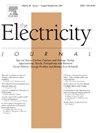中国智能网联汽车数据安全风险实证研究:公众信息处理与行为意向
IF 2.2
Q1 Social Sciences
引用次数: 0
摘要
随着全球数字经济的快速发展和车联网产业生态系统的不断扩大,车联网中的数据安全、软件漏洞、通信劫持、隐私泄露等风险日益突出。汽车数据安全现在呈现出前所未有的复杂性和挑战。平衡数据安全和智能网联汽车的发展已成为全球汽车行业面临的关键问题。了解公众如何处理风险信息,以及影响其行为意图的关键因素,以应对智能网联汽车的数据安全问题,对于促进车联网产业的可持续发展至关重要。在本研究中,我们研究了发生在2022年12月的一起涉及中国智能网联汽车的典型数据泄露事件,并对468名车主进行了调查。采用两阶段混合偏最小二乘结构方程模型(PLS-SEM)和人工神经网络(ANN)技术,分析了公众如何处理信息并形成应对这种风险的行为意图,以及相关影响因素。结果表明,产品知识、风险感知和系统信息加工对公民应对行为意愿有显著影响。其中,产品知识不仅是行为意向的最强预测因子,而且是风险感知、信息需求和信息寻求的关键前项。风险感知也在不同程度上促进信息需求和系统处理。信息需求在产品知识与信息加工之间、风险感知与信息加工之间都起着显著的中介作用。本文章由计算机程序翻译,如有差异,请以英文原文为准。
An empirical study of data security risks in China’s intelligent connected vehicles: Public information processing and behavioral intentions
With the rapid development of the global digital economy and the continuous expansion of the Internet of Vehicles (IoV) industry ecosystem, the risks associated with data security, software vulnerabilities, communication hijacking, and privacy breaches in connected vehicles have become increasingly pronounced. Automotive data security now presents unprecedented complexities and challenges. Balancing data security and the development of intelligent connected vehicles has become a critical issue for the global automotive industry. Understanding how the public processes risk information and the key factors influencing their behavioral intentions in response to data security concerns in intelligent connected vehicles is essential for promoting the sustainable development of the IoV industry. In this study, we examined a typical data breach incident involving Chinese intelligent connected vehicles that occurred in December 2022 and conducted a survey of 468 vehicle owners. Using a two-stage hybrid Partial Least Squares Structural Equation Model (PLS-SEM) and Artificial Neural Network (ANN) technique, we analyzed how the public processes information and forms behavioral intentions in response to this risk, as well as the relevant influencing factors. The results indicate that product knowledge, risk perception, and systematic information processing significantly affect citizens' coping behavioral intentions. Among them, product knowledge emerges not only as the strongest predictor of behavioral intentions but also as a key antecedent of risk perception, information need, and information seeking. Risk perception also facilitates information need and systematic processing to varying degrees. Furthermore, information need plays a significant mediating role between both product knowledge and information processing, as well as between risk perception and information processing.
求助全文
通过发布文献求助,成功后即可免费获取论文全文。
去求助
来源期刊

Electricity Journal
Business, Management and Accounting-Business and International Management
CiteScore
5.80
自引率
0.00%
发文量
95
审稿时长
31 days
期刊介绍:
The Electricity Journal is the leading journal in electric power policy. The journal deals primarily with fuel diversity and the energy mix needed for optimal energy market performance, and therefore covers the full spectrum of energy, from coal, nuclear, natural gas and oil, to renewable energy sources including hydro, solar, geothermal and wind power. Recently, the journal has been publishing in emerging areas including energy storage, microgrid strategies, dynamic pricing, cyber security, climate change, cap and trade, distributed generation, net metering, transmission and generation market dynamics. The Electricity Journal aims to bring together the most thoughtful and influential thinkers globally from across industry, practitioners, government, policymakers and academia. The Editorial Advisory Board is comprised of electric industry thought leaders who have served as regulators, consultants, litigators, and market advocates. Their collective experience helps ensure that the most relevant and thought-provoking issues are presented to our readers, and helps navigate the emerging shape and design of the electricity/energy industry.
 求助内容:
求助内容: 应助结果提醒方式:
应助结果提醒方式:


